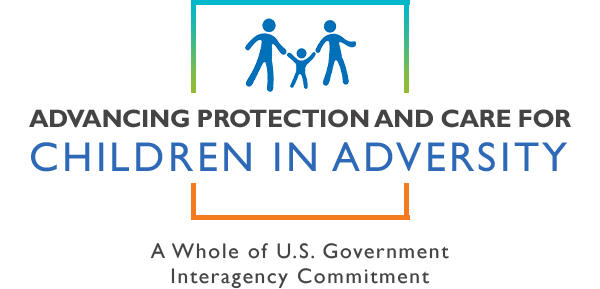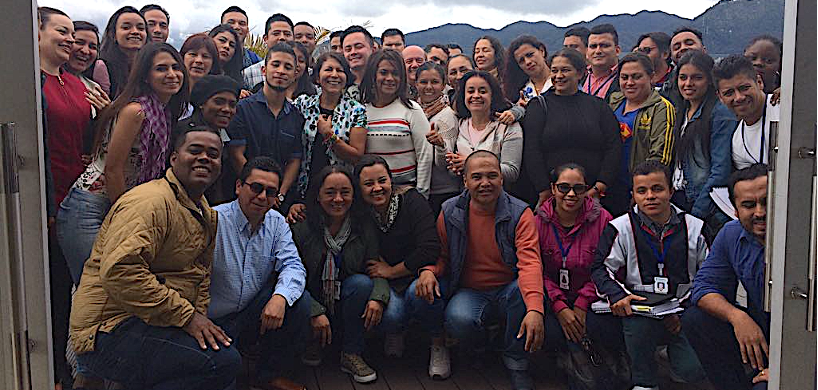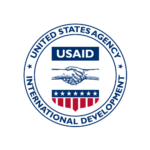ON THE ROAD WITH THE VIOLENCE AGAINST CHILDREN SURVEY: INTERVIEW WITH A VACS ENUMERATOR
October 25, 2021
“Your presence in the field gives these children the feeling that someone is paying attention. It’s the first step toward making change.”
— Manuel B., VACS Enumerator

Manuel B. on his way to interview youth for the VACS in Nariño, a remote area off the northwest coast of Colombia (Photo credit: Manuel B)
Manuel is no stranger to violence. As a former lieutenant in the Colombian police force, he has experienced more violent encounters with drug traffickers and gangs than he’d care to admit. But as an enumerator or surveyor for Colombia’s Violence Against Children Surveys (VACS) Manuel saw violence through a very different lens as he sought out and listened to the personal stories of Colombian children and youth. The job is difficult, often involving long journeys on dusty roads in small, hard-to-find villages, to the homes of his interviewees who may be reticent to open up. But Manuel was not deterred—he came to see this work as a higher calling—one that provided an opportunity for him to interact with young people whose lives could be altered significantly by an outsider talking to them about the cycle of violence they were born into, offering a glimmer of hope that it could change.
What does it mean to be on the front lines of the VACS process? We asked Manuel to share his experience with us, which he did, in the following interview, which was conducted in Spanish with the aid interpreter Vanessa Ramos.
Q: WHY DID YOU CHOOSE TO BECOME AN ENUMERATOR? WHAT DID YOU HAVE TO DO TO QUALIFY FOR THE JOB?
I was invited to apply for the position by the supervisor in my region. I had prior experience in interviewing for the Department of Statistics and my background as a former police officer was good training for dealing with people in difficult circumstances. It sounded like a very interesting opportunity and it was.
Q: WHAT WAS THE TRAINING LIKE?
The training was extensive. We spent three full weeks learning from people who work in the field. It included simulations and role-playing dramatizations that provided a sample of what we could expect to encounter. I accompanied a supervisor and watched him conduct local interviews so I could learn firsthand from him. The trainers were very experienced and very impressive. I learned a lot from them. To make sure the subjects are as comfortable as possible, only men interview boys, and only women interview girls.

A group of VACS Enumerators who have just completed their training Photo credit: IOM
Q: WHAT REGION DID YOU WORK IN?
I worked on the Pacific Coast in the region called Nariño, which borders Ecuador on the south and the Pacific Ocean on the west. It is a very remote and violent region that has experienced many years of conflict between gangs, guerillas, and paramilitary groups so it can be very dangerous. When I was in the police force I was part of the jungle command that was created to fight against narcotics trafficking in the area. It was so remote and dangerous, at that time we would only go in by helicopter.
Q: WERE YOU AFRAID TO GO BACK TO THE AREA TO CONDUCT THE SURVEY?
I’m always afraid – to go back alone as an ex-policeman and to come into contact with former guerillas and gang members is very risky. I see them staring at me—they recognize me—but so far, they have left me alone.
Q: HOW OLD WERE THE BOYS YOU INTERVIEWED?
Eighty percent of the children I interviewed were from 13–16 years old.
Q: WAS IT DIFFICULT TO GET THE FAMILIES TO LET YOU INTO THEIR HOMES?
To get access to the kids, the strategy was to speak to the father first —man-to-man. I had to convince him that I was not a threat. Once he felt comfortable with me, he would give me permission to speak to his sons. And once they could see their father was ok with it, the boys would participate.
Q: WAS IT DIFFICULT TO GET THE BOYS TO TRUST YOU?
We had two factors working against us: the first was fear of revenge. They were afraid if they said the wrong thing in the interview the gang leaders who controlled the area would hurt them. The second was the prevalence of ‘machismo’ in this area. It is not “proper” for a man to be a victim of sexual violence. There is a very big stigma around this in the community. So, often the boys don’t want to admit what they have experienced in this regard.
Q: HOW DID YOU GET THEM TO OPEN UP?
Well, first of all, the houses are very small wooden primitive structures — often they are floating on the rivers or lakes, and very close together. The walls are very thin. There is no privacy. So, I would take them outside and we would sit by the river where no one else could hear us. Then I would ask what they like to do – to find something we had in common. This is a coastal town and the boys are expected to leave school at 12 years old. That’s when they are considered adults and are expected to start working full-time as fishermen. So often I would talk to them about fishing. And I would tell them, “I am going to ask some questions that no one else will hear,” to let them know that the conversation was just between them and me. I worked to build a trust and gain their confidence, making sure they understood it was safe to talk to me.
If I felt there was some degree of violence present I would make a comment to the kid that it will help other boys who are in the same situation or worse. In some cases, when I didn’t feel the boys were victims of violence, it would be better to pretend that that is normal and not make a big deal of it because it could be a risk for the enumerators if you say you are trying to help another child who is a victim of violence. Then you are implicating that other children are victims of violence and you don’t want to call attention to it. The boys are aware that they are going to be asked about the interview so you have to be very sensitive in seeing what is going on around each child—what the risks are for him and for the enumerators, too.
Q: WHAT WAS THE HARDEST PART OF THE PROCESS FOR YOU?
As an enumerator, you have to handle every situation differently. You pick up cues from the child and the environment. It’s important to recognize when a child has been a victim and to be sensitive to how they react to the questions and listen as he is telling his story. Often when this is the case they become shyer and you have to give them room to open up and tell their story.
“I don’t understand how a person could generate that kind of pain on a child who cannot defend himself. I feel their pain and sadness.”
— Manuel B., VACS Enumerator
Q: WHAT IS THE HARDEST QUESTION TO ASK?
I don’t remember one specific question but the section about sexual violence is the most complicated, because you enter into the most intimate section of the interview. This part is the hardest to ask.
Q: HOW DID YOU FEEL LISTENING TO THESE VERY PERSONAL STORIES?
Of course, as a man, these cases affected me deeply. I’m the father of a 15-year-old boy, myself. I don’t understand how a person could generate that kind of pain on a child who cannot defend himself. I feel their pain and sadness.
But as an enumerator, I have to stay impartial. The nature of the interview is to keep the information confidential and anonymous. That was my job. I remember one 15-year-old telling me that his stepfather abused him physically and sexually for as long as he could remember—his whole life. At the end I asked him what happened with the stepfather and he started to smile and said that he had gotten involved with one of the more violent drug trafficking gangs and they killed him. Rather than mourn his death, the boy was relieved and actually happy about it. This was a very difficult story to listen to.
Q: DID YOU EVER FEEL YOU’VE CHANGED SOMEONE’S LIFE BY SHARING THEIR STORY?
At the end of our time together, I would try to touch the hearts of the kids by making sure they understood that the body is sacred. To let them know there is another path away from violence. I feel I touched them and that was very satisfying.

Families with youth 13 and older all across the country are asked to participate in the VAC survey. (Photo credit: IOM)
Q: WHAT HAVE YOU LEARNED THROUGH THIS WORK?
I learned a lot. First, because I was able to go to remote areas that I thought I would never have access to again. You can’t realize how difficult life is in those areas and the conditions these kids live in. It makes you realize how lucky you are – even if you don’t have much in your life – you cannot imagine how poor these families are. I was able to meet and speak with amazing kids that I would never have had the opportunity to talk to otherwise. They touched my life in a way I never could have imagined.
Q: DO YOU FEEL THE VACS IS MAKING AN IMPACT?
When you enter into a community you bring some sense of institutionality with you. Your presence in the field gives these children the feeling that someone is paying attention. It’s the first step toward making change. We must keep talking about the violence in order to see a change.
Q: DO YOU HAVE HOPE THAT THINGS WILL CHANGE?
Totally. To be negative would mean failure. And that is not an option.
—————————
Thanks to dedicated workers like Manuel and the collaborative efforts of numerous partners that include USAID, the International Organization on Migration, the U.S. Centers for Disease Control, Together for Girls, UNICEF, the World Health Organization, and many others, the voices of Colombia’s youth have been recorded and measured in the VACS.
Results of the survey, published in 2020, revealed that over 40 percent—nearly half—of Colombia’s youth have been victims of violence, a number that prompted an immediate and vigorous response. Consequently, the Government of Colombia has developed a comprehensive strategy to address this pattern of violence, both at the national and local levels. More information about Colombia’s efforts can be found in the accompanying article here.







